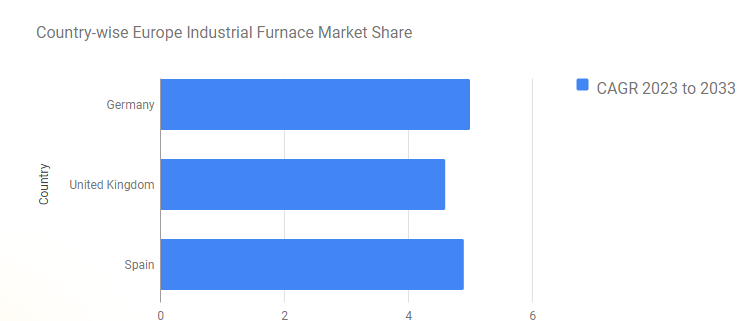The European industrial landscape thrives on a powerful backbone – industrial furnaces. These versatile workhorses play a crucial role in various manufacturing processes, applying intense heat to transform raw materials into the building blocks of modern civilization. From steel production to glass manufacturing, the European industrial furnace market is experiencing steady growth, fueled by innovation and a focus on efficiency. Let’s delve into the diverse applications of industrial furnaces and explore the exciting opportunities shaping this dynamic market.
The Power of Heat: Applications of Industrial Furnaces
Industrial furnaces come in a wide array of configurations, each designed for specific applications:
- Metalworking: Furnaces play a vital role in various metalworking processes, including:
- Melting: High-temperature furnaces melt down scrap metal or raw materials like iron ore for further processing.
- Heat Treating: Furnaces are used to alter the mechanical properties of metals by carefully controlling temperature and time. This includes processes like hardening, tempering, and annealing.
- Brazing and Soldering: Furnaces provide precise heat control for joining metal components using brazing alloys or solder.
- Glass Manufacturing: The glass industry relies heavily on furnaces for:
- Melting: Furnaces melt raw materials like silica sand and soda ash to create molten glass.
- Annealing: After forming, glass undergoes a controlled cooling process in furnaces to eliminate stress and improve strength.
- Chemical Processing: Certain chemical reactions require specific temperature ranges. Industrial furnaces are used to provide the necessary heat for these processes.
- Advanced Materials Processing: The development of new materials like composites and ceramics often involves high-temperature furnace treatments for curing, sintering, or other processes.
Get Exclusive Sample Copy of the Report:
https://www.futuremarketinsights.com/reports/sample/rep-gb-18448
A Market Glowing with Potential: Growth Factors
Several key trends are driving the growth of the European industrial furnace market:
- Focus on Automation and Efficiency: Manufacturers are increasingly adopting automation and advanced control systems in industrial furnaces to optimize energy consumption, improve process consistency, and reduce production costs.
- Growing Demand for High-Performance Materials: The increasing demand for lightweight, high-strength materials in various industries like aerospace and automotive is driving the need for advanced furnace technologies for processing these materials.
- Environmental Regulations: Stringent environmental regulations are pushing furnace manufacturers to develop more energy-efficient models and explore alternative heating sources like electricity and biomass to reduce emissions.
- Modernization of Aging Infrastructure: Many existing industrial furnaces in Europe are reaching the end of their lifespan. Replacing them with modern, energy-efficient models presents a significant growth opportunity.
- Focus on Research and Development: Continuous research and development in furnace technologies are leading to the creation of more efficient, environmentally friendly, and versatile furnace systems.
The Europe industrial furnace market size is expected to register USD 2,789.7 million by 2023. It is anticipated to showcase a steady CAGR of 4.9% between 2023 and 2033. Sales of industrial furnace in Europe will likely register USD 4,514.5 million by 2033. Revenue stood at USD 2,674.2 million in 2022.

Challenges and Considerations
The European industrial furnace market also faces some hurdles:
- High Initial Investment: Advanced industrial furnaces equipped with automation and energy-efficient technologies can have a significant initial cost, which may deter some manufacturers.
- Energy Price Fluctuations: The European market is susceptible to fluctuations in energy prices, which can impact the operating costs of industrial furnaces.
- Skilled Labor Shortage: Operating and maintaining advanced industrial furnaces requires specialized skills. A shortage of skilled labor in some regions can be a challenge for manufacturers.
Get Full Report Now: https://www.futuremarketinsights.com/checkout/18448



